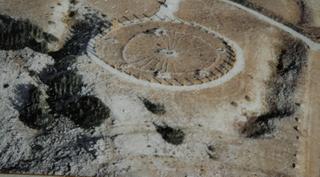While some like chocolate bars and the bubble nature of candy, some also like the molasses and ice cream? :)
If Plato Had thought "the new born" was not really such a "blank slate" then what did he mean exactly? If we could remember, "in what form" would these memories have manifested?
The origins of thought would have found that what existed before, had to make it's way into what we are doing today? So is it really "lost" since we cannot and do not remember what was before? Or, is it possible to remember?
Not many can see in this abstract way, or have considered how a photon might have traveled? Sure they have understood satellites and the travel through space, but have they consider this in context of CSL lensing? Sean put up a link yesterday that had me seeing how such a travel over distance might have had some photon's strange journies in context of such lensings.
So how does this lump of clay ever take with it all that was before. Is it just a slight shift in our tonal? What was "not apparent before" is now very much a a part of our views of nature now. Before, it was "very pleasing," and now, it is "still very pleasing" that our cosmological views have been extended some how? :)
Likewise, if the very fabric of the Universe is in a quantum-critical state, then the "stuff" that underlies reality is totally irrelevant-it could be anything, says Laughlin. Even if the string theorists show that strings can give rise to the matter and natural laws we know, they won't have proved that strings are the answer-merely one of the infinite number of possible answers. It could as well be pool balls or Lego bricks or drunk sergeant majors.
Of course we always look for directions as to which way we'll have to look for things to understand just what our perceptions reveal and what is the basis for our thoughts as to the nature of the universe?
For example, theory says that Higgs particles are matter particles, but in most respects the Higgs behaves more like a new force than like a particle. How can this be? In truth, the Higgs is neither matter nor force; the Higgs is just different.
So it is never easy for me to follow from one thought to the next.
Imagine, the "molasses" here for a minute. What gives mass it's shape while we cannot discern the very beginning as an asymmetrical valuation? Based on the notion, that there was a simpler time entropically, how do we know what is discretely measured?
Why the discrete measure and it's shape?
New measurements of top quark mass at Fermilab have revised estimates for the mass of the Higgs boson.
Scientists believe that the Higgs boson, named for Scottish physicist Peter Higgs, who first theorized its existence in 1964, is responsible for particle mass, the amount of matter in a particle. According to the theory, a particle acquires mass through its interaction with the Higgs field, which is believed to pervade all of space and has been compared to molasses that sticks to any particle rolling through it. The Higgs field would be carried by Higgs bosons, just as the electromagnetic field is carried by photons.
"In the Standard Model, the Higgs boson mass is correlated with top quark mass," says Madaras, "so an improved measurement of the top quark mass gives more information about the possible value of the Higgs boson mass."
According to the Standard Model, at the beginning of the universe there were six different types of quarks. Top quarks exist only for an instant before decaying into a bottom quark and a W boson, which means those created at the birth of the universe are long gone. However, at Fermilab's Tevatron, the most powerful collider in the world, collisions between billions of protons and antiprotons yield an occasional top quark. Despite their brief appearances, these top quarks can be detected and characterized by the D-Zero and CDF experiments.
So yes there are these experiments that lead us to think about how the universe came into being? All these things that we see in the universe, are they so very different from every other point in space. How is it's particle nature revealed and we have gained much from discerning the quantum dynamically nature of what, "just is."
What just "is?"
Physically, the effect can be interpreted as an object moving from the "false vacuum" (where = 0) to the more stable "true vacuum" (where = v). Gravitationally, it is similar to the more familiar case of moving from the hilltop to the valley. In the case of Higgs field, the transformation is accompanied with a "phase change", which endows mass to some of the particles.
I mean it's vague to me that such a memory could have been transferred to other things. The Universe has become very large, and entropically complex? Our universe of discrete things, have become complex in discretized values. How would we have ever seen the "purity of thought manifest" if we did not delve ever deeper into the nature of things?
In 2000 the same analogy was used to establish the robustness of the spectrum of primordial density fluctuations in inflationary models. This analogy is currently stimulating research for experimenting Hawking radiation. Finally it could also be a useful guide for going beyond the semi-classical description of black hole evaporation.



